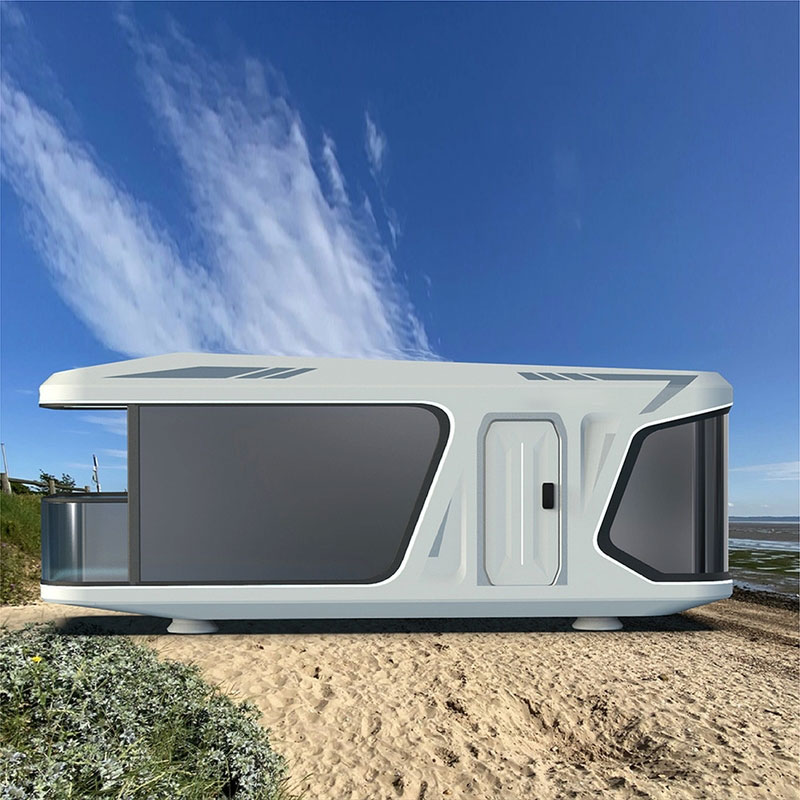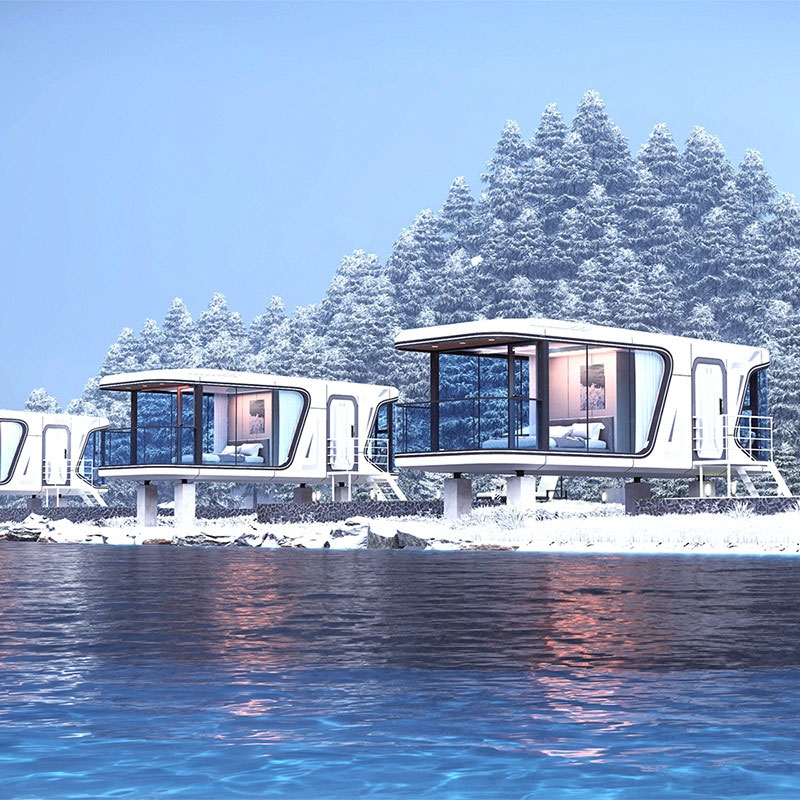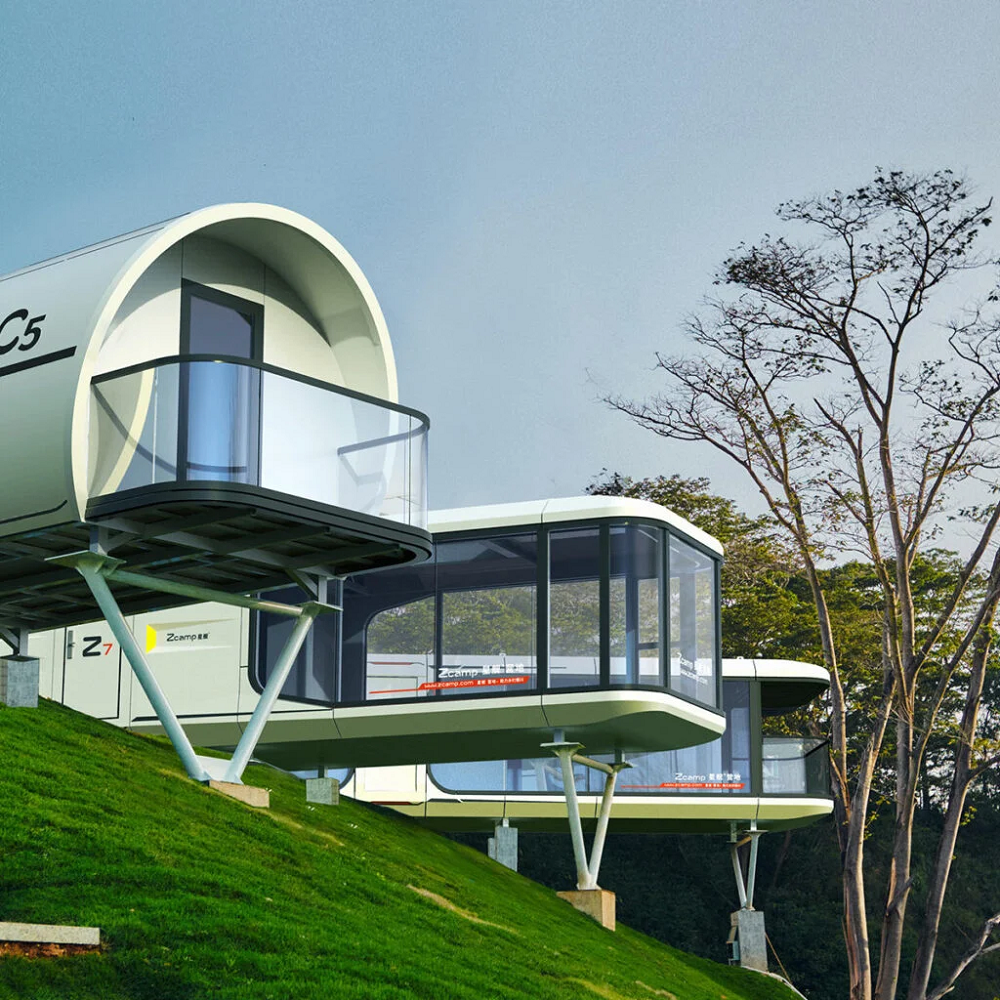In recent years, the world has seen a dramatic shift in how people view living spaces. As urban populations grow and the cost of living rises, many individuals and families are turning to innovative housing solutions to maximize their limited living space. The capsule house concept has gained popularity, offering a unique blend of functionality, efficiency, and style. This article explores the rise of capsule house(French:maison capsule) and the various factors contributing to their appeal in today’s society.
Understanding Capsule Houses
Definition and Design Principles
Capsule houses are compact, modular living spaces designed to optimize functionality and minimize waste. These structures typically feature a minimalist aesthetic, emphasizing clean lines and open layouts. Often ranging from 100 to 400 square feet, capsule houses utilize every inch of space effectively.
The design principles behind capsule houses focus on maximizing utility without compromising comfort. Thoughtful layouts incorporate multi-functional furniture, including convertible beds and foldable tables. By emphasizing a “less is more” philosophy, capsule houses create inviting environments that promote simplicity and mindfulness.
Historical Context
The concept of tiny living has historical roots that extend back centuries. While the term “capsule house” might be relatively new, the idea of compact living has existed in various forms. For example, traditional Japanese homes, often small and efficiently designed, embody similar principles.
In recent decades, as urbanization has increased, the trend of compact living has experienced a resurgence. Capsule hotels, popular in Japan since the 1980s, paved the way for exploring small spaces in various applications. These hotels inspired a new generation of architects and designers to innovate and create livable capsule-style homes that adapt to modern lifestyles.

The Benefits of Capsule Living
Affordability and Financial Impact
One of the most significant advantages of capsule houses is affordability. With housing prices skyrocketing in urban areas, capsule living offers a solution for those seeking to own a home without an overwhelming financial burden. The lower costs associated with building and maintaining a smaller space contribute to significant savings.
Additionally, many individuals who opt for capsule living find that their overall cost of living decreases. Smaller utility bills, fewer furnishings, and reduced maintenance requirements allow residents to allocate their resources more effectively. This financial flexibility empowers residents to pursue other interests, such as travel or investing in experiences rather than material possessions.
Environmental Sustainability
Capsule houses promote environmental sustainability through their efficient use of resources. The smaller footprint means less land is consumed, preserving green spaces and reducing urban sprawl. Furthermore, these homes often incorporate eco-friendly materials and energy-efficient technologies, making them more sustainable than traditional houses.
Many capsule houses utilize solar panels, rainwater harvesting systems, and energy-efficient appliances. These features help minimize the ecological impact of housing. By living in a capsule house, individuals contribute to a larger movement towards sustainable living and reduced resource consumption.

The Design Aesthetic of Capsule Houses
Minimalism and Functionality
The design aesthetic of capsule houses typically embraces minimalism, focusing on simplicity and functionality. The interiors are often bright and airy, using light colors and open layouts to create an illusion of more space. By eliminating clutter and unnecessary items, residents can enjoy a more streamlined and fulfilling living experience.
Furnishings in capsule houses are predominantly multifunctional. For example, a bed may pull down from a wall or convert into a sofa, maximizing utility while minimizing floor space. This adaptability encourages a lifestyle centered around practicality rather than excess. Capsule houses urge residents to take stock of their belongings and make conscious choices about what is essential.
Customization and Personal Touches
While capsule houses prioritize minimalism, they still allow for personal expression and customization. Residents can choose decorative elements, such as artwork, colors, and textiles, to reflect their unique styles. The compact nature of these homes encourages individuals to curate their belongings, selecting only those that hold significant value or meaning.
Many capsule home designers encourage residents to get involved in the design process. This collaboration allows for tailored solutions that cater to individual needs and preferences. The result is a home that feels uniquely personal and comfortable, despite its small size.

Challenges of Capsule Living
Space Limitations
Despite their many benefits, capsule houses come with challenges. The most significant issue is the limited space, which can present difficulties for residents accustomed to larger homes. Adjusting to a smaller living area may initially require a mental shift, as individuals must learn to prioritize space and belongings effectively.
For families or individuals with hobbies requiring significant storage—and those who enjoy entertaining—it is crucial to develop strategies for managing space. Residents must embrace their capsule lifestyle by optimizing storage solutions and being intentional about their needs. Learning to live harmoniously within limited square footage can be a valuable skill set that contributes to personal growth.
Lifestyle Adjustments
Living in a capsule house often demands lifestyle adjustments. Minimalist living encourages new habits and perspectives that might feel restrictive at first. For instance, residents may need to adopt a more organized approach to daily activities, especially when it comes to cooking, cleaning, and maintaining cleanliness.
Participants in capsule living may also find themselves evaluating their social interactions and entertainment choices. Smaller spaces limit the number of guests who can visit at one time, prompting residents to seek outdoor activities or community events for socialization. Embracing these adjustments leads to richer experiences and opportunities for connection in the long run.

Community and Social Interaction
Creating Connections
Capsule houses often encourage a sense of community among residents. Since many of these homes are located in shared developments or urban environments, opportunities for social interaction abound. This communal atmosphere fosters connection and collaboration among neighbors, creating support networks that can enrich individual lives.
Community events, workshops, or gatherings centered around sustainability can encourage residents to learn from one another. By sharing experiences and ideas, individuals can enrich their knowledge of minimalist living and deepen their sense of belonging. This aspect of capsule living enhances the overall experience and pivots towards a more sustainable lifestyle.
Urban Living and Collaboration
As cities grow and increasingly dense populations develop, the idea of communal living becomes more appealing. Capsule houses encourage collaborative lifestyles, where interactions among residents become a focal point of daily life. This dynamic fosters creativity and innovation while encouraging shared resource use, such as tool libraries, shared gardens, and communal spaces.
Collaboration can also manifest through sustainable practices. Residents may come together to participate in renewable energy initiatives, local gardening, or community clean-up activities. This synergy promotes friendship and strengthens social bonds, which are essential for overall well-being.

The Future of Capsule Houses
Innovations in Design
As the demand for compact living continues to rise, the future of capsule houses looks promising. Innovative architects and designers are developing new models and concepts that push the boundaries of traditional housing. These designs focus on integrating advanced technologies that improve comfort and efficiency while maximizing the use of available space.
Modular capsules that can be easily transported or reconfigured offer exciting possibilities for future living. As cities evolve, these versatile designs may emerge as sustainable solutions to urban housing challenges. Architects continuously find creative means to optimize footprint, making capsule living more appealing to a wider audience.
The Role of Urban Planning
Urban planning plays a critical role in the future development of capsule houses. As cities grapple with issues such as housing shortages and environmental impact, collaborative efforts between designers, officials, and communities can shape effective solutions. By incorporating capsule living into master plans, cities can diversify housing options and create more sustainable urban environments.
Supportive policies and regulations will also encourage the growth of capsule homes. Zoning laws, permits, and infrastructure improvements will determine the feasibility of these compact living spaces. Thus, the combination of innovative designs and proactive urban planning can pave the way for the next wave of housing solutions.
The Appeal of Capsule Living
In conclusion, capsule houses represent a growing trend in modern living that resonates with individuals seeking efficiency, affordability, and sustainability. While they may present challenges, the benefits often outweigh the drawbacks. Capsule living encourages thoughtful design, fosters community interaction, and provides environmentally friendly solutions to contemporary housing issues.
As society continues to shift toward minimalism and sustainability, capsule houses are likely to play a major role in shaping the future of urban living. Their sleek designs, multifunctional spaces, and emphasis on community make them increasingly appealing to a diverse range of individuals. Whether as a primary residence or a temporary living situation, capsule houses offer a lifestyle that aligns with today’s values of simplicity, connection, and environmental stewardship.
Embracing the art of living large in small spaces can lead to a rewarding and fulfilling experience. Those who choose to adopt this lifestyle will find that they are not only creating a cozy home but also forging a path to a more meaningful way of living. So, consider exploring the capsule house movement and discover how this innovative approach can transform your life!


